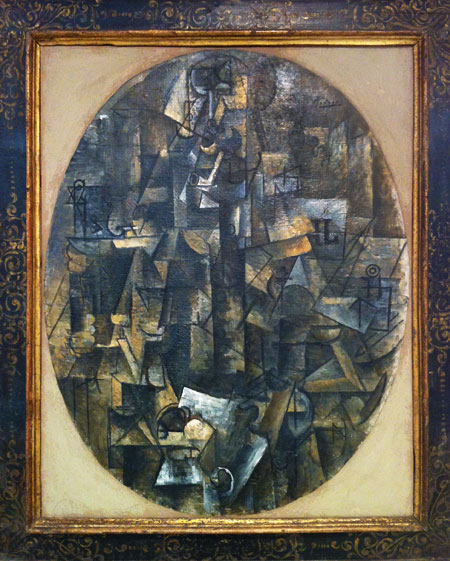Supercharging the Creative Process:
A Roadmap Toward Better Art
Part 3, A Slice of Life
The kind of universe sometimes portrayed in paintings is rather narrow: the universe of a single person.
Every person tends to think of himself or herself as a single individual. Don’t you? You are just one out of 7 billion people.
But lets break it down and see what “one” includes. The average person is estimated to consist of 37.2 trillion cells. Each of which has its own tiny, perhaps primitive, personality of sorts. After all, it is not you who decides when any particular cell may turn left or right, or reproduce, when it might eat or not eat. Who decides where white blood cells may go? Not you. You aren’t even paying attention to life at that level.
If it were you having to make all those decisions, I think you’d have a hard time carrying on a conversation. Can you imagine 37.2 trillion cells asking you stupid questions while you were trying to walk? I think you’d stumble.
That you are “one” is of course not exactly accurate. Recorded in our minds are the personalities and pattern reactions of other people we have known including their reactions, ways of speaking and various behaviors—some of which you might like to borrow at times.
Here too are aggregate blends of different and diverse personalities we have known. The lessons of teachers and mentors. Memories. Good experiences and bad. Decisions we have made. Friendships. Alliances. Compulsions. Inhibitions. Recordings of songs we hate that circulate in our brains like the theme from… haha, I’m going to spare you by not saying it.
You might have your father’s chin. Your mother’s eyes. And Bullwinkle’s nose (hope not).
You may have the sweet smile of your grandmother when you are happy, and the callous backhand of a drunken uncle when you are annoyed, especially in the morning before you’ve had your coffee. If there are times when you are “not really you” then who were you being at the time?
If all these fish and chips are part of you along with 37.2 trillion cells each of which has their own life energy separate from you, then surely you’re not just one. Instead of a number coming between 0 and 2, maybe “you” are something more. Perhaps each individual is a whole system of created things. Perhaps that’s what gives some people such depth.
Now let’s talk about Picasso, widely considered one of the great painters of all time. Yet what is cubism?
 |
|
| Picasso, "Man Smoking a Pipe," 1911. |
Picasso was the first painter in history to literally separate out the various parts and elements of an individual. He broke out selected parts and painted each individually, thereby revealing people in a new light. When he painted a woman, he might paint her father’s nose. Her mothers lips. The hands of a seamstress. The arms of the Industrial Revolution. Sections of cloth. Intervening washes of disturbance.Ridges of energy. Mental mirrors. Distortions. The person’s own perceptions of self. Significant bits and pieces he could see that collectively equated to the individual.
If a person really is a world unto themselves, as is plain for all to see thanks to our master of deconstruction, Picasso, then maybe that’s why we see such depth within the eyes.
Picasso also toyed with selective perceptions at times emphasizing color over form, or form over color. He broke scenes into digital pixels and scrambled the pixels so it was hardly recognizable. He liked to juxtapose various body parts of a person each viewed from a different direction. He also switched up the distances various parts were viewed from. And he also varied simplicities by which each part was painted.
Consider how you look from near and far and from different directions. Any of these perceptions of you are still accurately you, all at the same time. So why should Picasso not borrow from any of them in his work? He did it, because he could. And because it got people thinking. All of which serves to make the point that there is a lot more to any individual than meets the eye at any given time.
When we look into a lover’s eyes perhaps we are seeing glimmers of red sunsets, reflections of children learning how to walk, the love shared by parents, the flickering of candles in the night, the smell of rain swept streets, victories and losses, shoe laces and love letters, bursts of anger, weeks of sadness, friendships past and present, dreams and sometime contact lenses. It’s all quite exquisite, really.
All that and more is within the world of just one person. And all of it is fair play for the artist.
Next: Part 4, Philosophic Machines


















